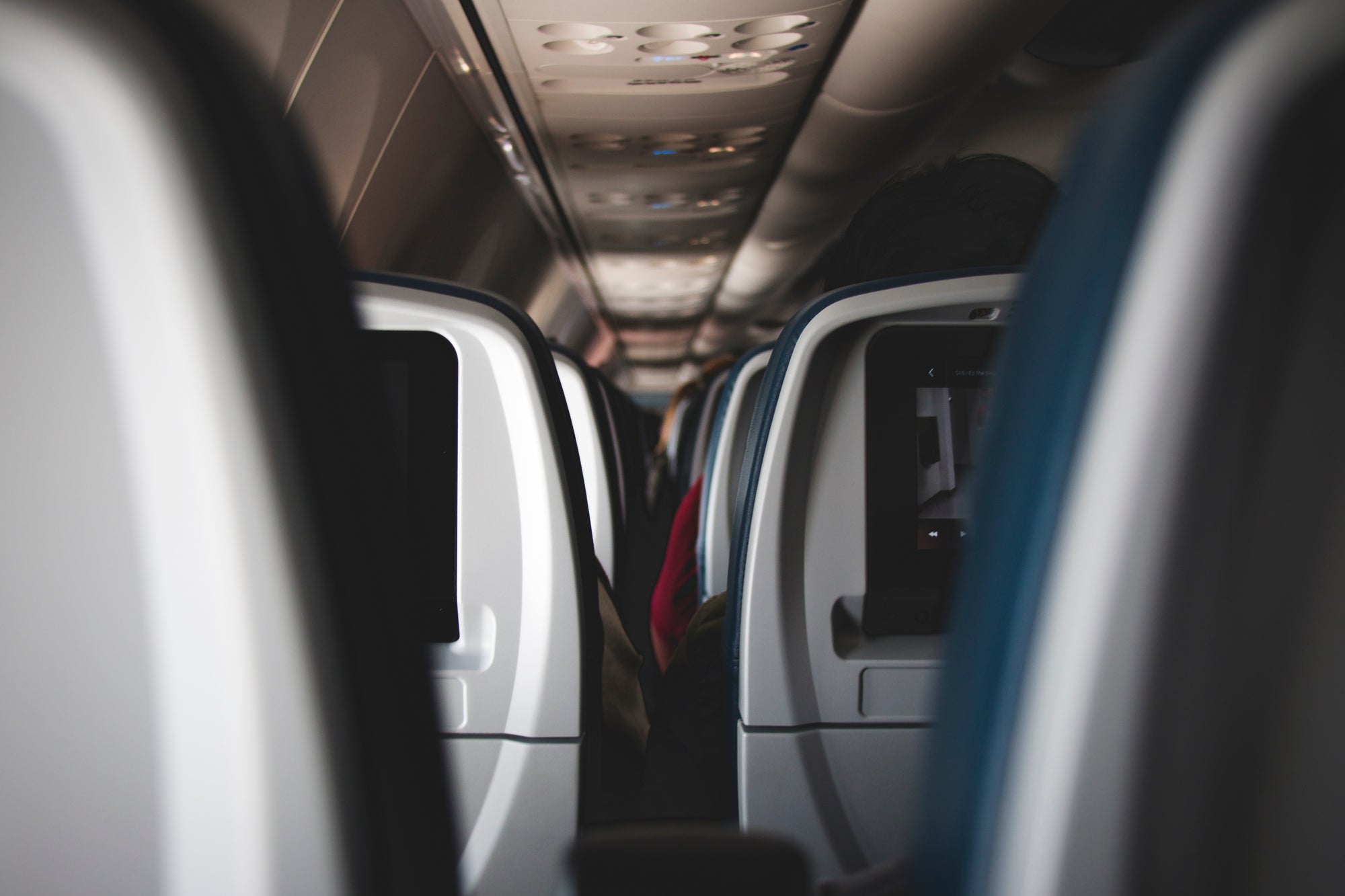10 Tips for Taking Your Dog on a Flight (in cabin)
July 20, 2018

There are lots of reasons to take your dog on a flight. Long trips and moving being the most common. We have compiled a list of tips for travelling with small pets in cabin based on our experience of flying with pets. (We will cover bigger dogs in another post, don't worry!).

1. Make sure your dog meets the travel requirements.
Check the pet policies for the airline you are considering booking. Some airlines require proof of vaccinations and other do not, in my experience most do not. I always travel with a copy of D's health certificates from the vet, sometimes it comes in handy. Some airlines have breed restrictions, but these do not often affect smaller breeds.
There is a weight restriction for dogs in cabin. In my experience, the limit is 15lbs and the dog has to fit comfortably in the carrier. You can find this information on most airline websites under special needs travel.
2. Call the airline, book the flight, then call the airline again.
Each flight is only allowed to have 5 pets in cabin as an FAA regulation (not including service dogs). You can reserve one of these 5 spots in advance. First, choose the flight you want to travel on. Then, call the airline and give them that flight number so that they can check availability of the 5 spots. Once confirmed that there is availability, book the flight online like usual. Finally, call the airline back and give them your itinerary number so that they can add the pet specification and secure your dog a spot. If your flight has multiple legs, you need to reserve a spot on all of the flights. It's actually really easy, customer service on the booking side is usually very helpful.

3. Selecting a carrier
Flying with your pet is not free, but there's an additional hidden cost.... your carry on bag! Your pet carrier counts as a carry on bag. You will still get a personal item, but you either need to check a bag or pack light (which, we have some gear for for!).
To fly with your dog, you need an approved flight carrier designed for animals. They are easy to find, and there are a lot of different types. I like a soft sided carrier, because it will go underneath the seat in front of you more easily. Mine is a duffle bag style with some extra pockets for D's leash and some treats.

4. Checking in at the airport
When you arrive at the airport, you will need to go to the special services line at the ticket counter of your airline. Let them know your flying with a pet and they will print your tickets with the special pet notes. Some airlines will require you show proof of vaccinations or other details so have your papers ready when you get to the counter.
This is also where you pay for your dog's flight. Rates vary from $90 to about $150 in my experience. They can put it on a credit card and off you go.
5. Getting through security
Hop in the security line like usual. When you get to the X-ray belt, you will put all of your regular stuff on the belt. Then, remove your dog from the carrier and put the carrier on the X-ray belt. The agents will usher you to the metal detector instead of the X-ray and you will walk through while holding your pet. The security guards will have to wipe your palms to test for explosives, so be prepared to hold your dog with one arm and offer up your palms for a hot second. Hang tight right there until you get the nod to go ahead. Put your dog back in the carrier, and off to your gate you go!
6. On the plane etiquette
Your pet carrier goes under the seat in front of you, never ever in the overhead compartment. Your dog must stay in the carrier the duration of the flight. I find it's easier not to make eye contact with D and she will go to sleep. Don't worry too much, if you are relaxed your dog will be more likely to relax too.
If your dog is unable to relax or stay quite in the carrier, it might be worth talking to your vet in advance to see if there are any techniques or medications that might help make your dog more comfortable in flight. Fortunately, most dogs do calm down after a few minutes. Airports are bustling and loud, they might actually be relieved to be safely in a carrier at your side!
7. Dealing with long layovers and/or delayed flights
So the first leg of your flight went smoothly, but your second flight is delayed with no take off in sight. Some airports have 'dog relief' areas that you can use to let your dog hit the loo. If not, you have a couple of options. If the flight is really delayed, you can actually go out of the gate/security area and take your dog for a walk outside the airport.
If you don't have enough time to get back through security, I have a secret trick! I pack a puppy training pad with me and find a family restroom in the gate area. Family restrooms are in most airports, and they are single rooms with locking doors. Go inside, lock the door, and put down the puppy training mat. If your dog really has to go, they will usually go on the pad. Dispose of the pad in the diaper disposal receptacle. Put your dog back in the carrier and get on your way.

8. International travel
Flying with your pet internationally is a whole different project! You will need to find about the import restrictions, quarantining, and vaccination requirements. Coming back in the US there are also special requirements depending on the country you are coming from. These vary quite a bit. I have found that airline customer service is really quite good and very helpful. I recommend a little internet research and a call to the airline to learn more.
9. A note on service dogs...
There are a lot of stories floating around the web about people getting their dog certified as an emotional support animal in order to fly with them for free. Airlines are countering this trend by requiring doctor's notes for emotional support and service animals. Please do not falsely claim your dog as a service or emotional support animal. Legally and correctly flying with your dog is easy and not that expensive. There are people that really rely on their service animals, and masquerading an untrained pet as a service animal jeopardizes the privilege for people that really need them. We have to support each other out there!
10. Taking a taxi
Some taxi drivers and services do not allow dogs in their cars, but I have never been rejected by a taxi. I make sure D is in her carrier when the taxi arrives and I keep her in the carrier on my lap the entire ride. I do not mention her or draw attention. I have found that so long as the dog is not loose and therefore unable to ruin or contaminate their vehicle it is not really a problem.





1 comment
When flying with a dog in-cabin make sure to prepare beforehand so that your flight is stress-free and smooth. After you book your seat, make sure to call your airline and let them know that you’ll be traveling with a dog or an ESA dog. Ask if there are any specific airline requirements and prepare as much as you can.